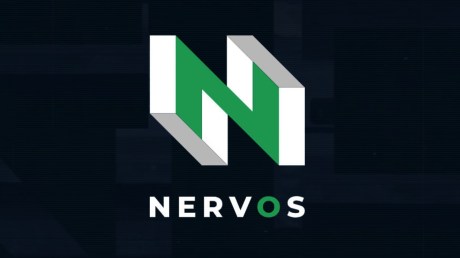
ARK is a new mechanism for transactions outside the chain that BURK was originally proposed by BURAK, a young Turkish developer. There are currently two applications built, one by Ark Labs, and the other from a second, none of them BURAK.
The original Ark’s original suggestion was more complicated, and some design objectives included more focused on privacy than the applications currently being built. It was originally imagined to require Checktemphyify (CTV) in order to build it.
The protocol depends on a central format server in order to work properly, but although this is able to provide the same functions and security guarantee by the lightning network. As long as the user remains online during the required time period, at all times (unless they choose to trust the operator for short periods of time), each user can get out of the ARK system unilaterally at any time and restore full unilateral control in their money.
Unlike Lightning, ARK does not require users to get a pre -designated liquidity for them in order to receive funds. The ARK user can simply aboard a wallet and receive money immediately without allocating liquidity at all.
Let’s walk with different pieces of astronomy.
Tree
It is called the metal currencies held on the virtual Ark UTXOS (Vutxos). These are simply pre -signed transactions that ensure a real UTXO creation under the user’s unilateral control once onchain is presented, but they are kept out.
Each user is intertwined within a tree of pre -signed transactions, or “batch”. ARK works by having a coordinator server, or ARK (ASP) service provider, it is easy to coordinate between users needed to create a boost. When users receive money, or on board to astronomy, or external, it is necessary to create a transaction tree associated with it to create a new batch.
The tree was built to take the sure UTXO root root, closed with a multiple group, including all users who carry VUTXOS in the tree as well as ASP, slowly divided into more and more UTXOS until they eventually reach the papers, which are all users of VUTXO. Each vutxo is guaranteed using a text program that must be signed by 2 out of 2, one key keeps the user, the other by ASP, or only the user after time.
Every time the tree is divided, Vutxos is created on Onchain, but there is more Utxos inner that has not yet been divided into vutxos. Each of this UTXOS is locked with Multisig N -of-n consisting of ASP, and all users who have VUTXO below the tree. During the process of creating payments, users begin in Vutxos for each of them, and they go to the signature of the tree root. This ensures that the root will not be signed before the claim of each user to Vutxo, which ensures that they always have one -sided arrival in the worst scenario of their money.
Each batch also has expiration time (which will be logical in the next section). This expiration spending path, which is as an alternative condition for spending for UTXO ONChain root as well as all of the inner UTXO, allows ASP to spend all the money unilaterally.
Transactions, pre -confirmed, Mosul inputs
When it comes to dealing with ARK, there are two possible two mechanisms, with their own costs and effects in terms of safety model. There are transfers outside the tour, or the previously confirmed transactions, and there are transportation operations in the tour, or already confirmed transactions.
Outside the tour is a very simple process. If another user wants to pay another (BOB), they simply call ASP and make them sign a transaction spent VUTXO to BOB. Bob is then granted this previously signed treatment, as well as all other treatment that precedes it to the payment root. Bob is now able to get out of one side of the astronomy with this deal, butASP must trust the collusion with Alice to multiply. These transactions can even be linked outside the tour several times before they are finally confirmed.
To finish the touches on the ARK treatment, users must engage in “payment swap”. Users can not already confirm the transfer without reliably inside at once, and they have to replace the atomic vutxo in a batch with a new Vutxo created in a new batch. This is done using ASP as an easy -to -exchange, and with the help of the so -called “insertion of the conductor”.

When the user goes to finish the ARK treatment using a boiled batch, they give up the Vutxo control to ASP. This may be a problem, what prevents ASP from just keeping it and not giving them Vutxo, confirmed in a new batch? Enter the conductor.
When creating a new batch, a second exit is created in the treatment that has been confirmed on the creation chain of a new tree consisting of UTXOS Mosul. When Bob goes to sign a ASP confiscation transaction for payment swap, it includes the treatment as one input from the UTXOS conductor From the new batch.
This creates an atomic guarantee. VUTXO is sure of Bob in a group in the same transaction, the insertion of the conductor is created in this necessary so that its confiscated treatment is valid. If this batch is never created, IE BOB does not actually receive the new Vutxo, the confiscated treatment that signed on ASP will not be valid and confirmation.
Liquidity dynamics and ban
All the necessary liquidity is provided to create new batches in order to facilitate the transportation operations between users by ASP. They have to get enough liquidity to create new batches for users until the validity of the old parts can end, and ASP can sweep them unilaterally to restore old closed liquidity to create Vutxos for users.
This is the essence of liquidity dynamics in the center of the ARK protocol. Although this is a big victory in efficiency, liquidity providers are not required to assess users and guess which they will actually get large folders of payments before they can get any money, in another, this is a loss of efficiency as ASP must have sufficient liquidity to continue creating new groups for users, whatever the formation of the expiration time.
This can be well mitigated by the number of times that ASP offers new batches to finish the touches on suspended transactions. If ASP tries to create new batches in actual time with the arrival of transactions, liquidity requirements will be significantly high. However, ASP can reduce the frequency in which they create new batches and significantly reduce liquidity requirements.
This dynamic also has effects on space use. Unlike lightning, which can provide fully strong confirmation guarantees, in order to obtain an unreliable equation from the final He has To be created onchain. This means that unlike lightning, as the volume of transactions does not reflect itself, the speed of ARK transactions requires a relative amount of using the area of the blocks, albeit in a very compressed and effective way. This creates the theoretical upper limit of the number of ARK batches that can be created during any specific time separation (although astronomical trees can be smaller or larger depending on this dynamic).
conclusion
ARK offers many ways to almost opposite the bodies to the lightning network. It is a significant improvement in space efficiency of uniform transactions, and it is far from the liquidity customization problem on the lightning network, but it has a more connected production limit associated with the Blockchains productivity.
This dynamic is almost the opposite bodies that make it a very complementary system for the lightning network. You can also exchange with it, IE Vutxos can be replaced in transactions that enter or exit from the lightning network.
Ultimately, how to see how the ecosystem of the widest bitcoin is not yet suitable, but it is stacked with an undoubted value protocol that will find some functional position, even if it is different from what is originally intended.
The post Bitcoin Layer 2: Ark first appeared on Investorempires.com.




